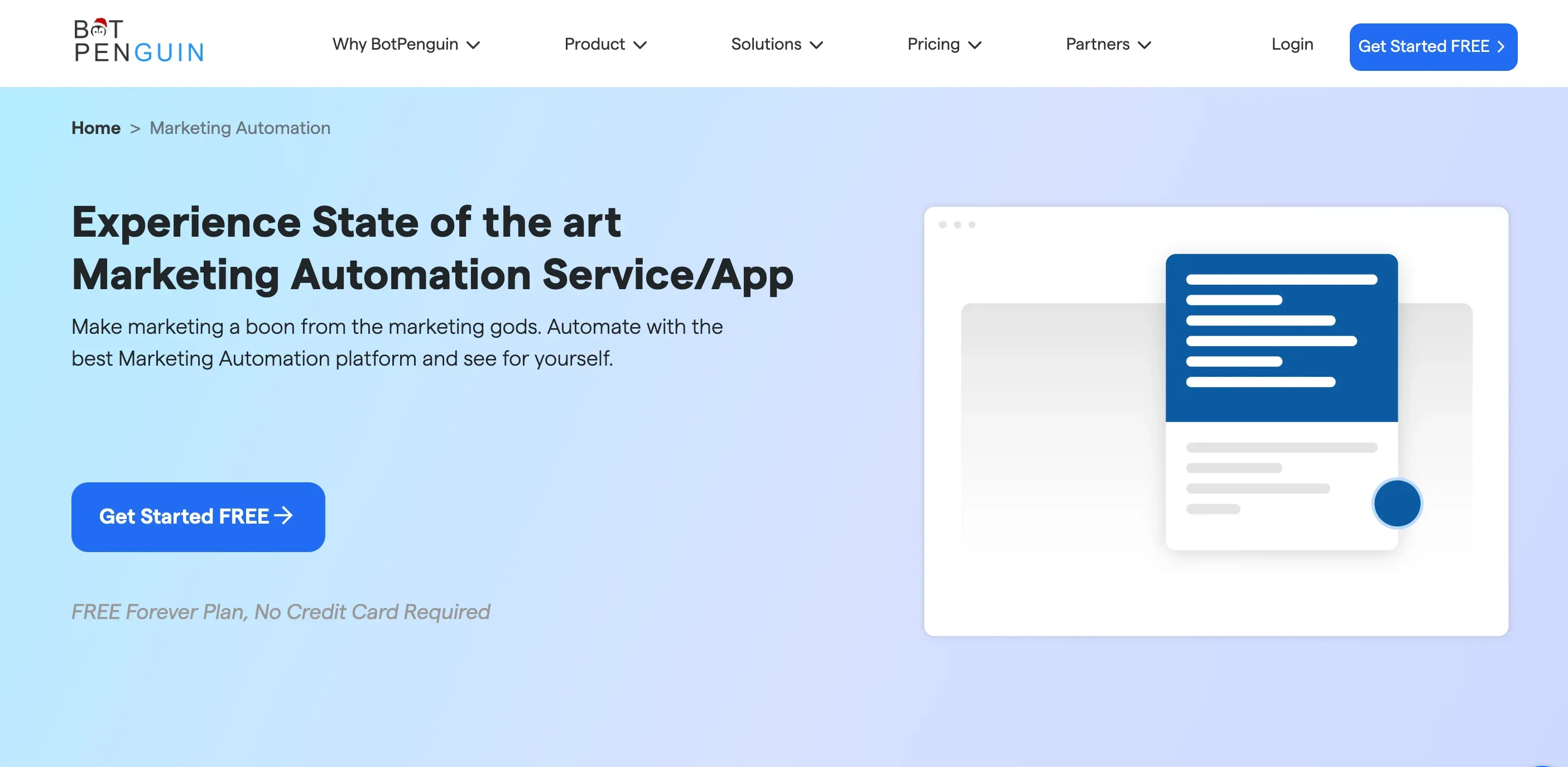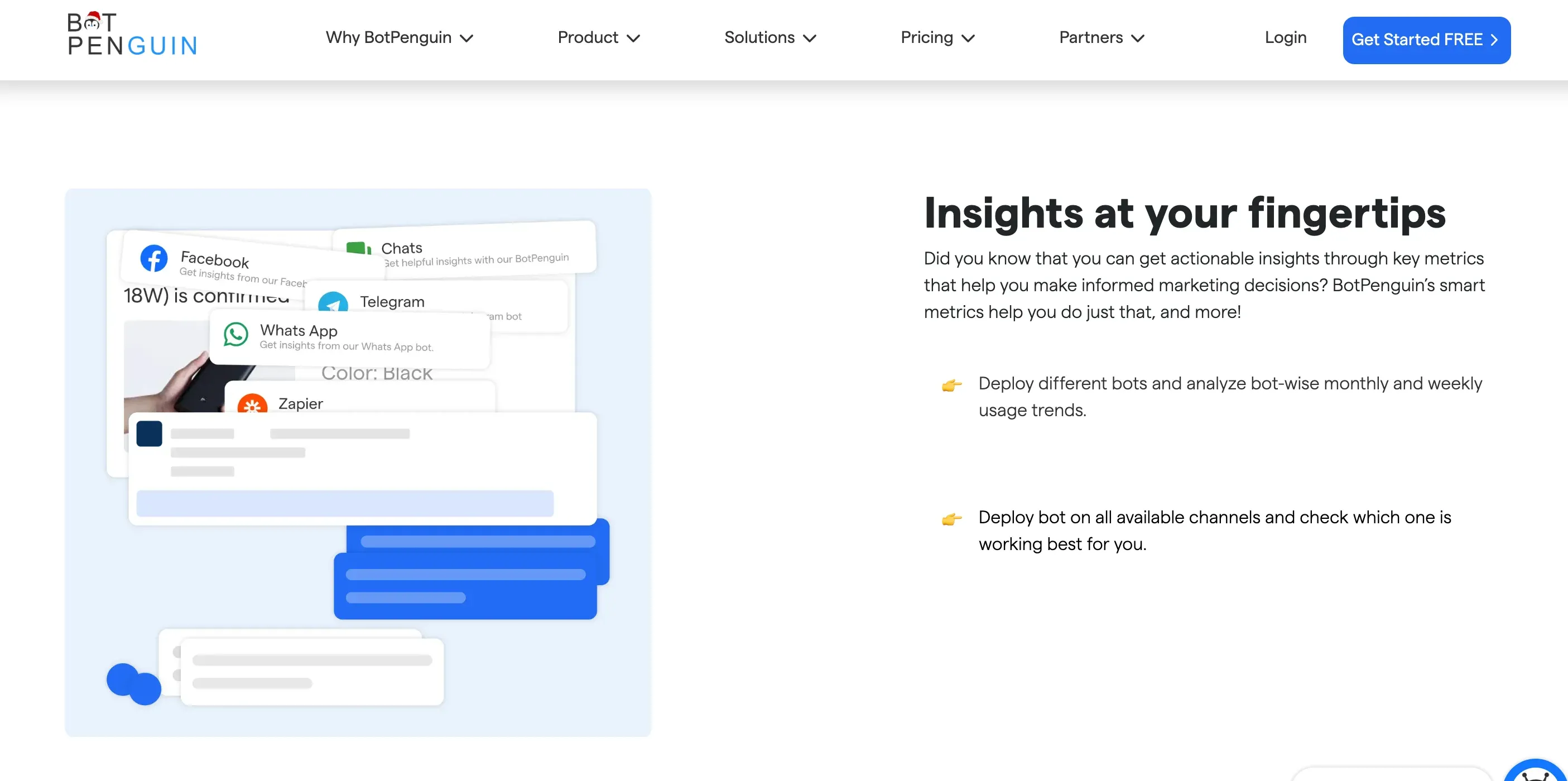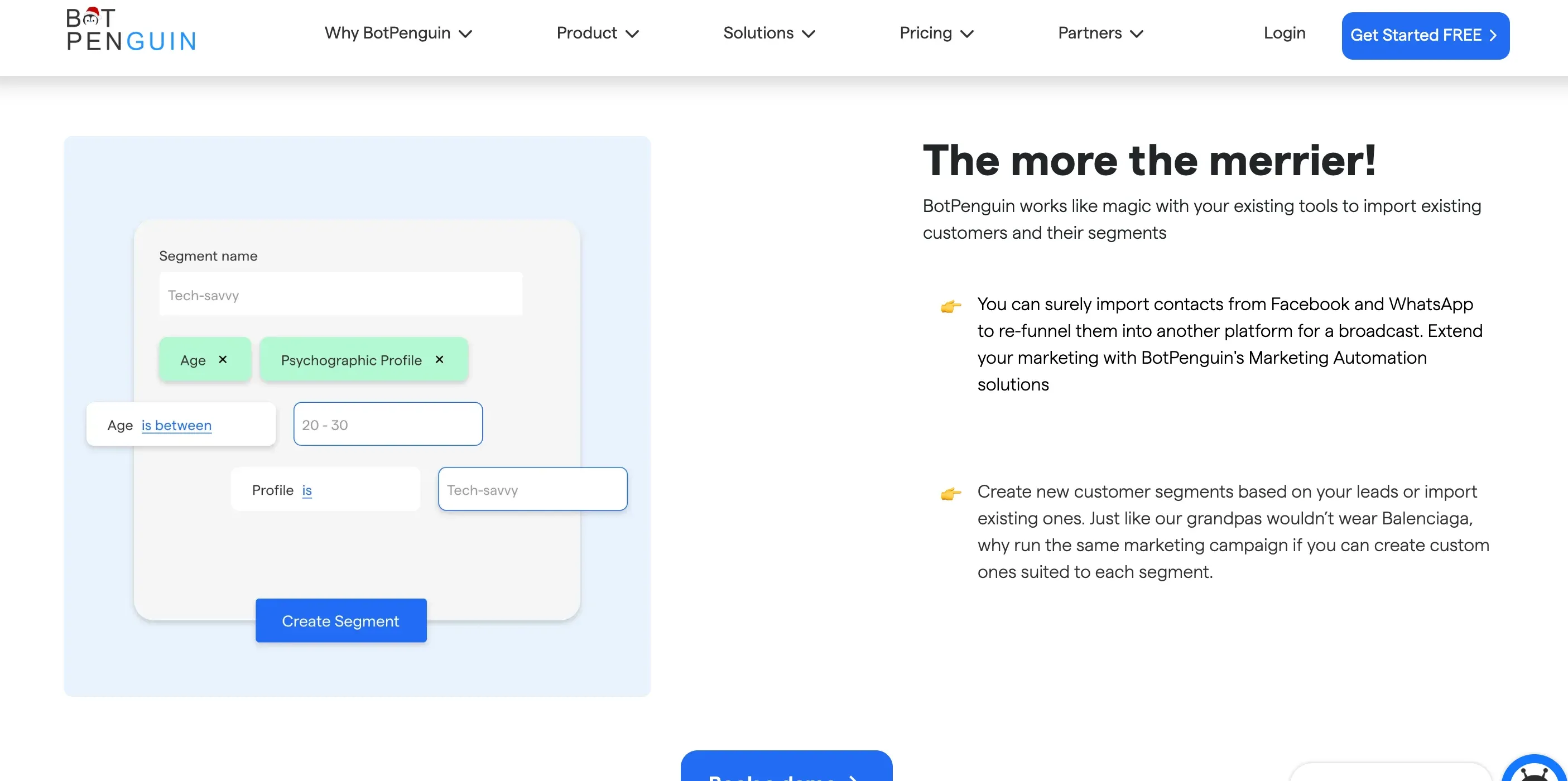To begin adopting marketing automation for your company, you must first monitor and collect client data through various interactions such as emails, SMS, website visits, social media, etc. This allows you to get a complete picture of each customer.
The best part is that you don't have to do this yourself. Set up the workflow in a competent marketing automation solution, which will handle everything for you.
Marketing automation allows you to send tailored marketing communications to every existing and potential consumer even when you’re not there to check your inbox or press ‘send.’
But that isn't all. Marketing is a rapidly expanding field of labor, and marketing automation hastened that expansion.
According to a recent study by the Small Business Administration, small businesses that use marketing automation see an average increase in revenue of 15%.
So, let's look at ten marketing automation best practices that can help you reach and engage your future and current consumers and expand your business.
Choosing the Right Marketing Automation Platform
So, you've decided to dive into marketing automation for your small business. But with so many options, how do you choose the right marketing automation platform that fits your needs? Don't worry; we've got you covered.
This section will walk you through the key factors to consider when selecting a marketing automation platform.

Understanding Your Business Needs
Assess your business type (B2B or B2C).
Identify your current marketing channels.
Define your marketing automation goals.
Scalability and Flexibility
Seek a platform that grows with your business.
Look for flexible features and pricing options.
User-Friendliness
Prioritize an intuitive and user-friendly interface.
Save time on campaign creation and workflow setup.
Integration Capabilities
Ensure seamless integration with CRM, email, and social media tools.
Utilize existing data for targeted marketing campaigns.
Affordable Pricing
Find budget-friendly pricing plans.
Consider tiered options based on contacts or features.
Support and Training
Choose a platform with reliable customer support.
Access help through email, live chat, or phone support.
Reputation and Reviews
Research platform reputations and reviews.
Gain insights from small businesses and online communities.
Setting Marketing Goals and Objectives
Now that you've chosen the right marketing automation platform for your small business, it's time to set some marketing goals and objectives. With clear goals, your B2C marketing automation efforts will be as effective. Here's how to get started.
Identify Your Business Objectives
First things first, identify your business objectives. What is your business trying to achieve?
Are you looking to increase brand awareness, generate leads, boost sales, or improve customer retention?
Once you clearly understand your business objectives, you can start setting marketing goals that align with them.
Use the SMART Framework
When setting marketing goals, it's important to use the SMART framework. SMART stands for Specific, Measurable, Achievable, Relevant, and Time-bound. Here's what each means
Specific: Your goals should be clear and well-defined.
Measurable: Your goals should be quantifiable so you can track your progress.
Achievable: Your goals should be realistic and attainable.
Relevant: Your goals should be relevant to your business objectives.
Time-bound: Your goals should have a deadline or timeframe.

Set Target Metrics
To measure the success of your marketing automation efforts, you'll need to set target metrics. These metrics should align with your marketing goals and objectives. For example, if your goal is to increase website traffic, your target metric might be the number of unique visitors to your website each month.
Monitor and Analyze Results
Monitoring and analyzing the results is important once your marketing automation campaigns are up and running. This will help you determine if your campaigns are effective and identify areas for improvement.
Look for trends in your data and adjust your marketing campaigns accordingly.
Adjust and Refine Your Goals
Marketing goals aren't set in stone. As your business evolves and your marketing automation campaigns generate results, you may need to adjust and refine your goals.
Be bold and pivot your strategy if things need to be revised.
Building and Segmenting a Targeted Customer Database
Building a solid customer database is crucial in any marketing strategy. But it's not just about gathering names and contact information.
It's about understanding your customers, knowing who they are, what they want, and how to reach them.
This section will explore the steps to build and segment a targeted customer database.
Along with Marketing Automation there are multiple features one should focus on-
- Marketing Automation
- WhatsApp Automation
- Customer Support
- Lead Generation
- Facebook Automation
- Appointment Booking
Step 1
Know Your Ideal Customer
Before building your customer database, you need to know your ideal customer. Take time to create buyer personas - fictional representations of your ideal customers.
Consider their demographics, interests, pain points, and buying behaviors. This will help you target your marketing efforts more effectively.
Step 2
Gather Data
Once you know your ideal customer, start gathering data. There are various ways to collect customer information.
You can use lead capture forms on your website, conduct surveys, or ask for customer information during in-store purchases.
Be transparent about how you will use their data and ensure compliance with privacy regulations.
Step 3
Clean and Validate Your Data
It's important to regularly clean and validate your customer data. People change their email addresses, move, or update their contact information.
Use data validation tools to ensure accuracy and remove duplicates or outdated information. Clean data will improve the effectiveness of your marketing campaigns.
Step 4
Segment Your Database
Once you have a solid customer database, it's time to segment it. Segmentation allows you to group customers based on shared characteristics, interests, or behaviors.
This enables you to create targeted marketing campaigns that resonate with specific customer segments.
Step 5
Use CRM and Marketing Automation Tools
A Customer Relationship Management (CRM) system and marketing automation tools can greatly simplify the process of building and segmenting your customer database.
These tools help you manage customer data, track interactions, and automate marketing campaigns. Choose a tool that fits your needs and budget.
Mapping Customer Journeys
Understanding your customers' journey is essential for effective marketing.
Mapping customer journeys helps you identify the touchpoints and interactions a customer has with your brand, from the first point of contact to conversion and beyond.
Let's explore how to map customer journeys.
Step 1
Identify Customer Touchpoints
Start by identifying your customers' various touchpoints with your brand. This could include your website, social media channels, email campaigns, customer support, etc.
Map out all the interactions a customer might have with your brand throughout their journey.
Step 2
Gain Insights from Data
Use data from your customer database and analytics tools to gain insights into how customers interact with your brand. Look for patterns and trends to understand customer behaviors and preferences.
This data will help you make informed decisions when mapping out customer journeys.
Step 3
Create Journey Maps
Now, it's time to create visual representations of your customer journeys.
Use tools like flowcharts or customer journey mapping software to outline the stages a customer goes through, the touchpoints they encounter, and their actions.
This will give you a comprehensive view of their experience.
Step 4
Identify Pain Points and Opportunities
Analyze your customer journey maps to identify pain points and opportunities for improvement. Are there any bottlenecks or gaps in the customer experience?
Are there opportunities to engage and convert customers at certain touchpoints? Use this information to optimize your marketing efforts.
Step 5
Continuously Monitor and Refine
Customer journeys are not set in stone. As customer expectations and behaviors change, your maps also need to evolve. Continuously monitor and analyze customer interactions and feedback.
Use this data to refine your customer journey maps and improve the customer experience.
Suggested Reading-
Automating Email Marketing Campaigns
Automated email marketing is a game-changer for small businesses, offering time-saving, efficiency, and improved audience engagement. To maximize its benefits, follow these best practices:
Segmenting Your Email List
Divide your email list based on demographics, interests, or buying behavior for more personalized campaigns.
Create Relevant Content for Each Segment
Craft tailored content, including subject lines and offers, to engage specific segments effectively.
Set Clear Goals for Your Campaigns
Define campaign objectives, such as open rates, click-through rates, or conversions, and use analytics to track progress.
Test and Optimize Your Campaigns
Conduct A/B tests to fine-tune elements like subject lines, imagery, and CTAs, applying insights for better-performing future campaigns.
Tracking and Analyzing Results
Tracking and analyzing the performance of your email marketing campaigns is vital for success. By monitoring key metrics and analyzing the data, you can gain valuable insights that will help you refine your strategies and improve your results.

Define Key Metrics
Before tracking, define the key metrics that align with your goals. Some common metrics to consider include open rates, click-through rates, conversion rates, and revenue generated.
By determining these metrics in advance, you can focus on gathering relevant data and clearly understand your campaign's performance.
Use Analytics Tools
Make the most out of analytics tools available to track and analyze your email marketing campaigns. Tools like Google Analytics or email marketing platforms offer invaluable insights.
After interacting with your emails, they provide information on email opens, clicks, bounce rates, and even user behavior on your website.
Utilize these tools to optimize your campaigns and make data-driven decisions.
Review, Adjust, and Improve
Regularly review and analyze your email campaigns' performance to identify improvement areas. Assessing the data will enable you to recognize trends, spot weaknesses, and identify opportunities.
Based on your analysis, adjust your email content, subject lines, or strategies to enhance engagement and increase conversions.
Test and Refine
Continuously test and refine your email marketing campaigns to achieve better results. Experiment with elements like design, personalization, or timing and evaluate their impact.
By embracing a culture of testing and refinement, you can continuously optimize your campaigns for better engagement and higher conversions.
Conclusion
Marketing automation can assist you in streamlining your marketing operations. When done correctly, it can boost the conversion rates of your marketing initiatives.
The most significant takeaway is establishing measurable marketing objectives and beginning modestly. Non-tech marketers should prioritize their goals before diving into the broad array of marketing tools available.
With the right technology and data-driven insights, small businesses can engage customers more effectively and drive growth to scale their business.
As marketing automation continues to evolve and become more accessible, small businesses that actively adopt it have a competitive advantage in today's market.
We also urge that you investigate how BotPenguin can assist you in automating and improving your inbound conversion process.
Sign up for free, or simply schedule a free product demo.
Frequently Asked Questions (FAQs)
How can small businesses effectively utilize marketing automation with limited resources?
Small businesses can leverage affordable automation tools, focus on targeted messaging, and prioritize automation for repetitive tasks to optimize their marketing efforts within resource constraints.
What key marketing automation strategies can help small businesses improve customer engagement?
Strategies such as personalized email campaigns, automated social media scheduling, and targeted content delivery can significantly enhance customer engagement for small businesses.
How can small businesses select the right marketing automation software for their needs?
Small businesses can evaluate and choose the most suitable marketing automation software that aligns with their unique requirements by considering factors like budget, scalability, ease of use, and required features.
What is the difference between CRM and marketing automation?
While CRM focuses on managing customer interactions and relationships, online marketing automation primarily automates marketing tasks such as email campaigns and lead nurturing.
CRM typically focuses on the customer lifecycle, while marketing automation focuses on streamlining marketing processes.
How can small businesses benefit from implementing marketing automation?
Marketing automation can help small businesses streamline repetitive tasks, nurture leads, and deliver personalized experiences, ultimately saving time and resources while boosting customer engagement and sales.
What are some essential marketing automation tools suitable for small businesses?
Tools like email marketing platforms, customer relationship management (CRM) software, and social media scheduling tools can be crucial for small businesses to automate and optimize their marketing efforts.


